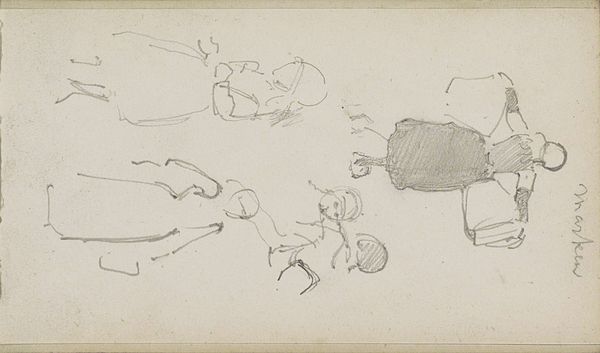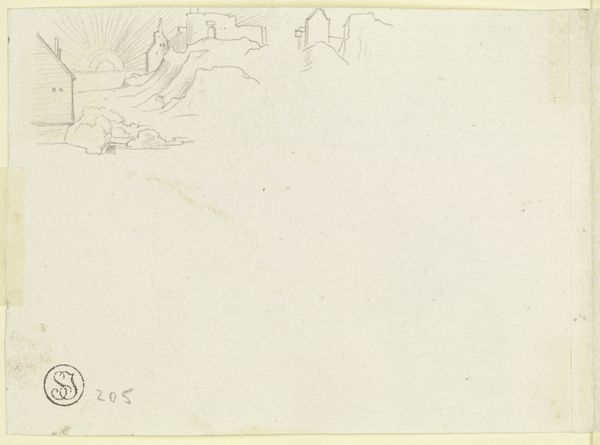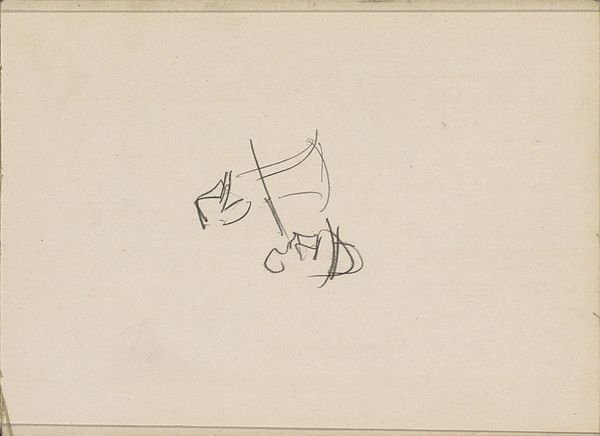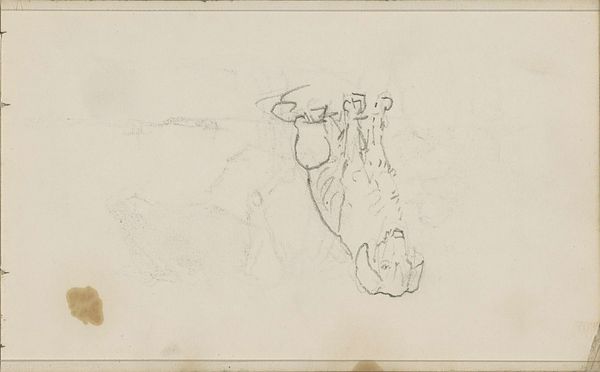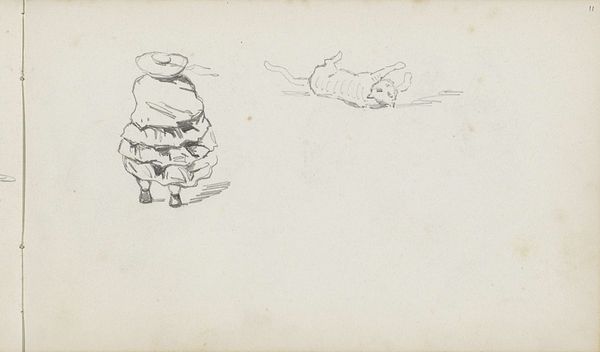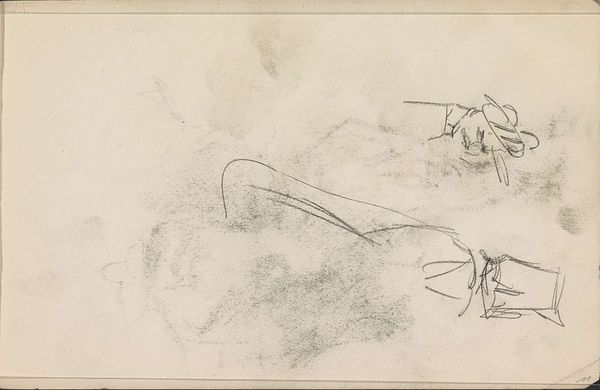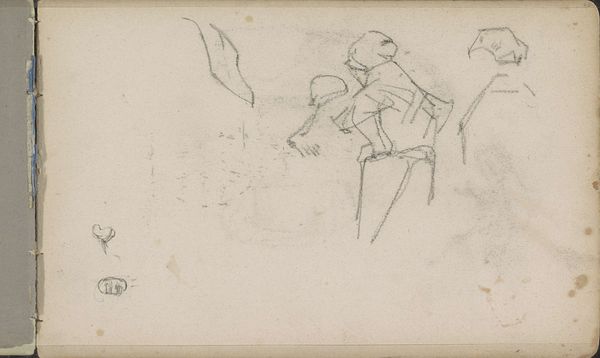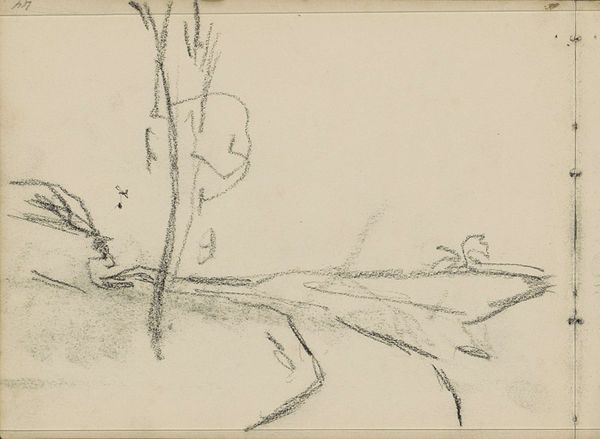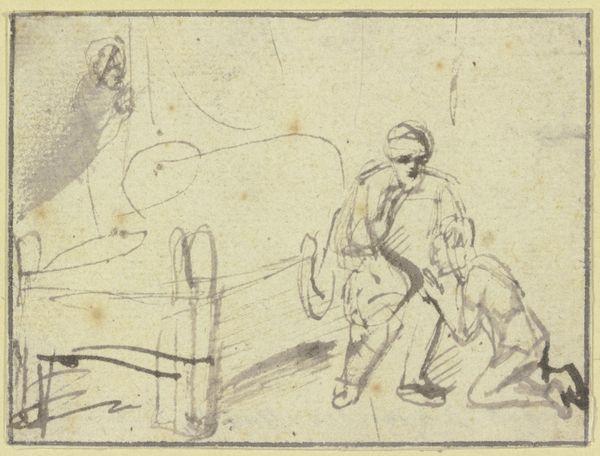
Studieblad met in het midden een schaatser op de rug gezien, rechts twee jagers 1797 - 1870
0:00
0:00
drawing, paper, pencil
#
drawing
#
pencil sketch
#
landscape
#
paper
#
pencil
#
genre-painting
#
realism
Dimensions: height 50 mm, width 198 mm
Copyright: Rijks Museum: Open Domain
Editor: So, this is "Studieblad met in het midden een schaatser op de rug gezien, rechts twee jagers," a pencil drawing on paper by Andreas Schelfhout, dating from somewhere between 1797 and 1870. It feels like a quick snapshot of daily life. What do you see when you look at it? Curator: I see a study in social observation. Look at the placement of the figures. The lone skater, seen from the back, isolates him within a larger social context. Schelfhout captures not just individuals, but different roles and activities. We see figures involved in leisure, in labour perhaps - depending on whether you view hunting as sport or a necessity. It really asks us to consider class and societal structure at that time. What is leisure, and for whom is it accessible? Editor: That's interesting. I hadn't thought about it in terms of class. I was mostly focused on the 'snapshot' feel of it, the immediacy. Curator: And that's a valid entry point. But consider the context of genre painting at that time. The 'everyday' was rarely just that; it was coded with meanings about morality, social order, and, definitely, class. This looks spontaneous, but is carefully arranged. How does Schelfhout depict the hunters in relation to the skater, and what assumptions might be embedded there? Editor: Hmmm. The hunters do seem more…assertive? Maybe more clearly defined, and actively moving. Whereas the skater, he’s just…there, passive almost. Is the lack of detail on the skater a sign of disregard? Curator: Possibly. Consider, too, that he's facing away. He has no agency or identity within our gaze. Think about who historically controlled the "gaze" in art, whose stories were being told, and from what perspectives. Who had the privilege of representation and who was just background noise. Editor: Wow. Okay, now I see it. It's not just a casual scene, it's loaded with social commentary about power and visibility. Thank you! Curator: Indeed! Art gives us a portal to look into society in ways other mediums fail. And even simple studies, sketches, give insights that should never be overlooked.
Comments
No comments
Be the first to comment and join the conversation on the ultimate creative platform.
